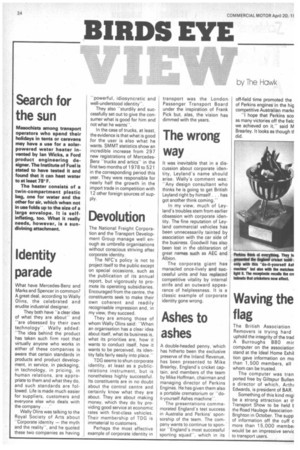Devolution
Page 36

If you've noticed an error in this article please click here to report it so we can fix it.
The National Freight Corporation and the Transport Development Group manage well enough as umbrella organisations without conscious striving after corporate identity.
The NFC's policy is not to project itself to the public except on special occasions, such as the publication of its annual report, but vigorously to promote its operating subsidiaries. Encouraged from the centre, the constituents seek to make their own coherent and readily recognisable impression and, in my view, they succeed.
They are among those of whom Wally Olins said: -When an organisation has a clear idea about itself, what its business is, what its priorities are, how it wants to conduct itself, how it wants to be perceived, its identity falls fairly easily into place."
TDG seems to shun corporate identity, at least as a publicrelations instrument, but is nonetheless highly successful. Its constituents are in no doubt about the control centre and certainly know what they are about. They are about making money, which they do by providing good service at economic rates with first-class vehicles. Their membership of TDG is immaterial to customers.
Perhaps the most effective example of corporate identity in transport was the London. Passenger Transport Board under the inspiration of Frank Pick but, alas, the vision has dimmed with the years.












































































































